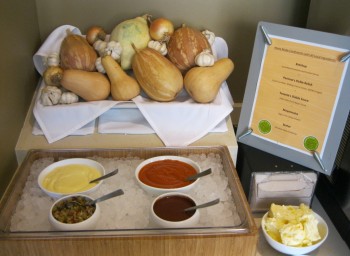How local can you go — food wise? That was the challenge taken up by dozens of Bon Appétit Management Company chefs in 31 states for the seventh annual Eat Local Challenge on Tuesday, September 27, 2011. Some cooked a meal from 99.9% local ingredients, with salt as the only allowable non-local ingredient. A few went 100% local — meaning they even foraged for salt from within 150 miles of the café. Others focused on serving one excellent local meal. The reasons to source local ingredients are simple but important if you care about sustainability: it tastes better, is more nutritious, encourages biodiversity, preserves open space, and protects the environment, just to name a few. The companywide Farm to Fork program has helped Bon Appétit accounts learn about what’s available in their area throughout the year, and how to use […]
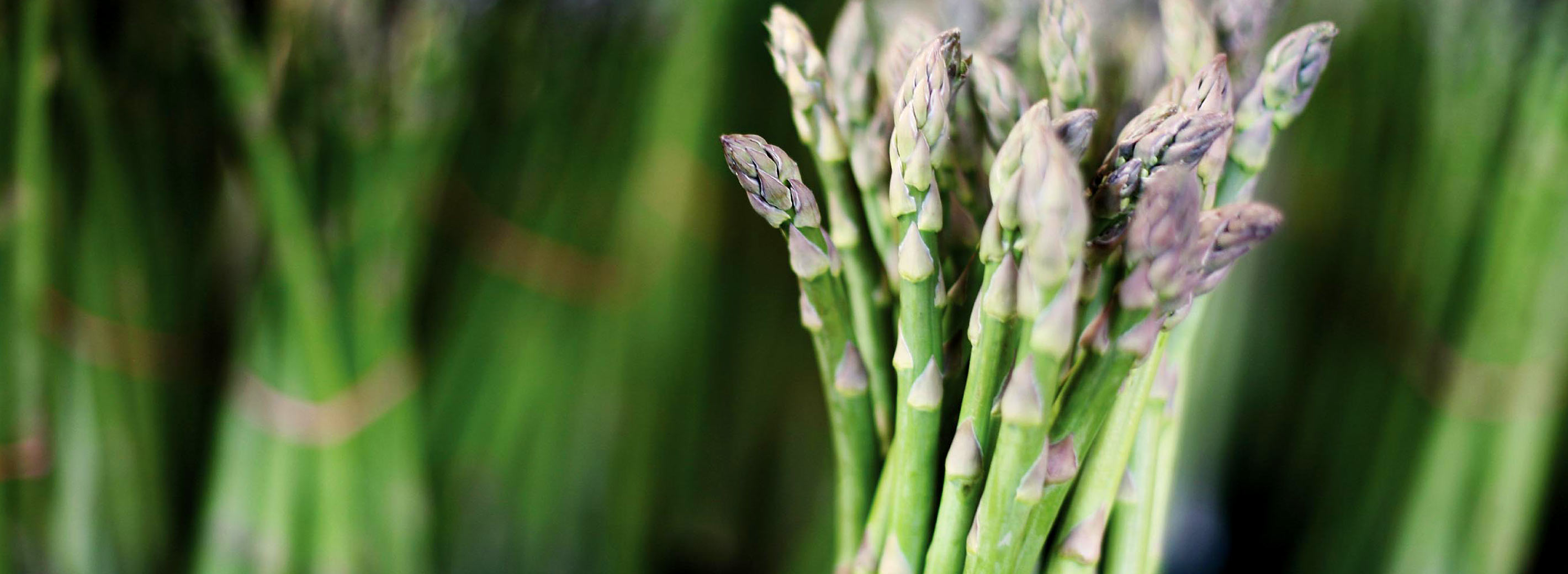
Blog: Farms
+ Blog Categories
Celebrating Food Week at the University of Pennsylvania
- Blog
The University of Pennsylvania is now in the midst of its third annual Food Week, sponsored by Bon Appétit at Penn Dining. This annual celebration covers a variety of topics — from local food, to food justice, to nutrition — and is a collaborative effort among students, faculty, local community activists and farmers, and Fox Leadership at Penn. Here are some highlights of last year’s Food Week, including a Food Justice Banquet in the form of a four-course meal (catered by Bon Appétit of course) and a panel on agriculture featuring several of our Farm to Fork partners:

Recipe: Bon Appétit at Nordstrom’s All-Local Scallops, Chard, and Farro
- Blog
The Eat Local Challenge has become one of my favorite celebrations each year. While many of our usual holidays come with prescribed dishes, such as turkey and stuffing for Thanksgiving, brisket and matzoh ball soup for Passover, and cookies topped with red and green sprinkles for Christmas, the Eat Local Challenge menu is always different — year to year, chef to chef, and region by region. The challenge is to create an whole menu where every ingredient (except for salt) comes from within 150 miles. While this is no easy task, I also find the challenge to be encouraging. Whether a chef or an eater, it encourages everyone to explore unusual flavors – found on our local farm and range lands and in our forests, lakes, and oceans, to learn about new producers, and tap into our inner creative spirit.
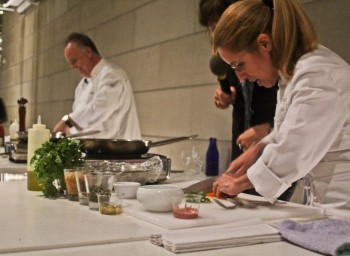
Terzo Piano Celebrates Local Farmers at Farm to Fork Fest
- Blog
Terzo Piano in Chicago, IL, loves to support and celebrate local farmers every day — as well as in a now-annual event it calls Farm to Fork Fest, a special dinner focused on educating guests about where food comes from and why buying from local farms is important.

Gallaudet University Goes All Out For Eat Local Challenge 2011
- Blog
To any Gallaudet University students walking into the Bon Appétit café on Tuesday Sept. 27, it seemed like a transformation had occurred. The normally wood-colored tables were decked out in blue and red checkered picnic-style cloth, and the entire café staff had donned blue jeans and farmers hats. It was Eat Local Challenge Day, and the point was to celebrate local, farm-fresh food. Students scattered themselves at different stations throughout the café in honor of the event. One group hosted a Taste Test, challenging their peers to guess which tomato was local (picked fresh that day from the Gallaudet Community Garden) and which was conventional (from California). Green Gallaudet, the on-campus environmental group, spoke with passers-by about the impacts our food choices have on the environment (did you know that by eating one less hamburger a week, you can significantly […]

Grain-fed vs. grass-fed beef — and somewhere in between?
- Blog
Thanks to Michael Pollan‘s book The Omnivore’s Dilemma and the documentary Food, Inc., more people have become aware that the majority of cows in this country are raised on a grain-based diet for the last few months of their lives — and why that’s problematic for the health of the cows, the health of the humans who eat them, and the environment. The short version: Grains such as corn and soy are cheap carbohydrates that make cows get fat fast (not unlike humans). But cows’ digestive systems were designed to handle a high-fiber diet of mostly fresh grass or hay, with some natural grains. High-grain corn and soy diets — and the feedlots in which they are stuffed with them — cause many cattle to get sick, and encourage the prevalence of antibiotic-resistant E. coli as well. But as with […]

How We Can Bee the Change: Pollination Panel Discussion at Seattle U
- Blog
Recently at Seattle University, Bon Appétit Management Company and Slow Food Seattle cosponsored a free showing of the new documentary Vanishing of the Bees, which was directed by George Langworthy and Maryam Heinen and narrated by actress Ellen Page. An astonishing 350 people attended the showing and the panel discussion with local beekeepers that followed.

Feeding our Soil and Communities: Visiting Shepherd’s Grain Co-op
- Blog
I eagerly returned for this summer’s eighth annual trip with other Bon Appétit staff to visit and dine with Shepherd’s Grain farmers in Washington State. On our excursion to Eastern Washington, Bon Appétit chefs, managers, and I visited the Spokane Hutterian Brethren Colony in Reardan, WA, where the Grosses, Hofers, and Walters uphold their collective 460-plus-year family tradition in farming, growing crops on 9,000 acres and living a self-sufficient lifestyle. I love this trip because – like many conscientious eaters today – I like to know where my food comes from. It’s a rare treat to be among 75 farmers and chefs who put the meaning of their work so eloquently into words.
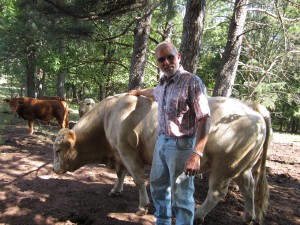
JuJo Acres: The Friendliest Cows Around
- Blog
When Jonas Stoltzfus of JuJo Acres in Loysville, PA, walked straight up to his non-castrated breeding bull and gave it a nice pat on the back, I knew I wasn’t on an ordinary farm.
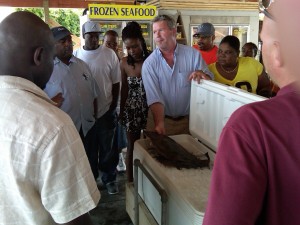
Bon Appétit at Duke Employees Connect Food Safety with Farming
- Blog
What do local farms have to do with kitchen safety? Both farmers and food service providers have a responsibility to keep their customers from becoming sick — and the better you know those customers, the heavier that responsibility weighs. In addition, the more Bon Appétit employees know about the farmers and artisans who provide the food served in the cafés, the more they can inspire customers to support these local heroes. Supporting local food producers rewards our community with tastier, safer food that contributes to our local economy. Employees of Bon Appétit at Duke University in Durham, NC, recently had the opportunity to connect food safety and farming first hand
